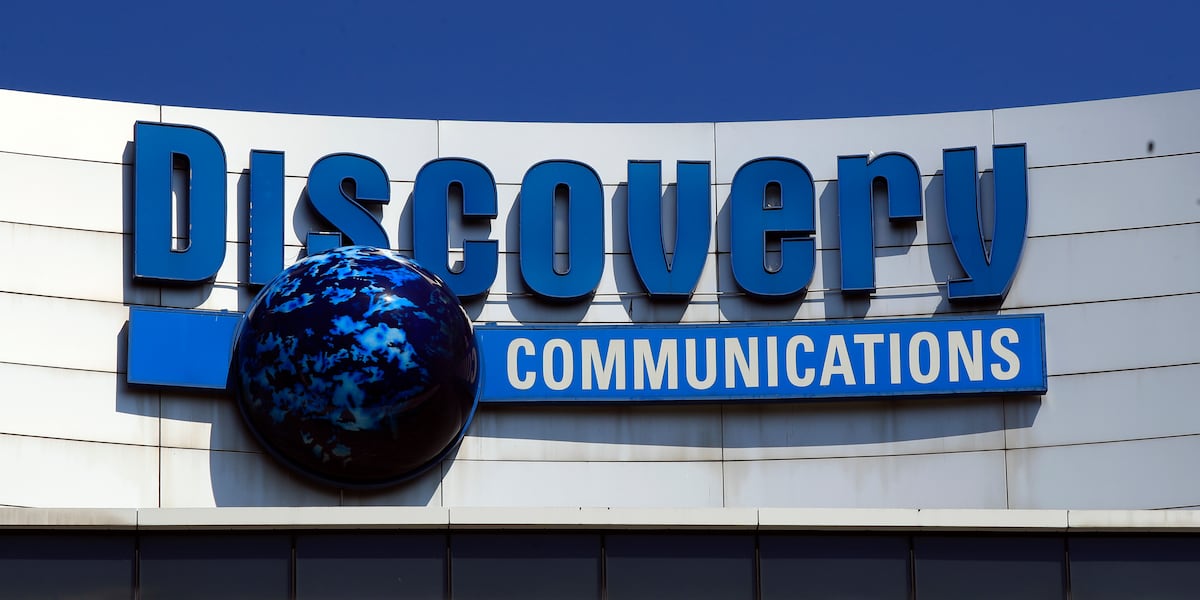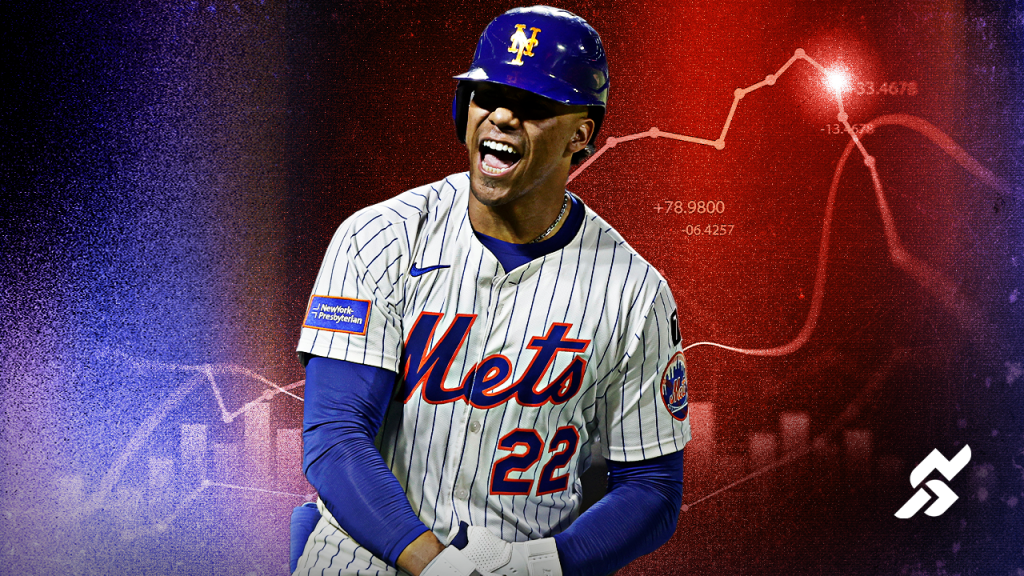Technology
Warner Bros. Discovery to split into two companies
NEW YORK (AP) — Warner Bros. Discovery will calve off cable operations from its streaming service, creating two independent companies as the number of people “cutting the cord” brings with it a sustained upheaval in the entertainment industry. HBO, and HBO Max, as well as Warner Bros. Television, Warner Bros. Motion Picture Group, DC Studios, […]

NEW YORK (AP) — Warner Bros. Discovery will calve off cable operations from its streaming service, creating two independent companies as the number of people “cutting the cord” brings with it a sustained upheaval in the entertainment industry.
HBO, and HBO Max, as well as Warner Bros. Television, Warner Bros. Motion Picture Group, DC Studios, will become part of the streaming and studios company, Warner Bros. said Monday.
The cable company will include CNN, TNT Sports in the U.S., and Discovery, top free-to-air channels across Europe, and digital products such as the Discovery+ streaming service and Bleacher Report.
Shares jumped 11% at the opening bell.
Warner Bros. Discovery CEO David Zaslav will become serve as CEO of the company that for right now is called Streaming & Studios. Gunnar Wiedenfels, chief financial officer of Warner Bros. Discovery, will be CEO of the cable-focused entity, for now known as Global Networks.
“By operating as two distinct and optimized companies in the future, we are empowering these iconic brands with the sharper focus and strategic flexibility they need to compete most effectively in today’s evolving media landscape,” Zaslav said in a statement.
Just days ago Warner Bros. Discovery shareholders in a vote that was symbolic as it’s nonbinding, rejected the 2024 pay packages of some executives, including Zaslav, who will make more than $51 million.
Warner Bros. Discovery said in December that it was implementing a restructuring plan in which Warner Bros. Discovery would become the parent company for two operating divisions, Global Linear Networks and Streaming & Studios. That was seen as a preview of the separation announced Monday.
Warner Bros. Discovery was created just three years ago when AT&T spun off WarnerMedia and it was merged with Discovery Communications in a $43 billion deal.
The cable industry has been under assault for years from streaming services like Disney, Netflix, Amazon and Warner Bros. own HBO Max. The industry is also being pressured by internet plans offered by mobile phone companies. Comcast, which is of nearly equal size to Charter, spun off many of its cable television networks in November, seeing so many customers swap out their cable TV subscriptions for streaming platforms.
Last month Charter Communications offered to acquire Cox Communications, a $34.5 billion merger that would combine two of the top three cable companies in the U.S.
So-called “cord cutting” has cost the industry millions of customers and left them searching for ways to successfully compete.
The Warner Bros. Discovery split is expected to be completed by the middle of next year. It still needs final approval from the Warner Bros. Discovery board.
Copyright 2025 The Associated Press. All rights reserved.
Technology
“From Gaming to Glowing”: Video Game Engines Now Driving the Most Crucial Breakthroughs in Fusion Energy Development
IN A NUTSHELL 



| IN A NUTSHELL |
|
In the quest for a sustainable energy future, the potential of fusion reactors stands out as a beacon of hope. These reactors have the capability to provide virtually endless energy but come with the significant challenge of tracking critical particle collisions within their systems. Recent advancements from South Korean scientists have revealed an innovative solution by leveraging technology from an unexpected domain: video games. This novel approach, using game algorithms to create digital twins of fusion reactors, could revolutionize how we understand and optimize these complex systems. Here’s how this fascinating intersection of technology and science is paving the way for breakthroughs in fusion energy.
The Core Challenge of Fusion Reactors
At the heart of any fusion reactor is the task of smashing subatomic particles together in a searing hot, high-energy plasma. This process occurs in devices known as tokamaks, which are toroidal-shaped fusion reactors. The primary event in these reactors is the collision and fusion of hydrogen isotopes, specifically deuterium and tritium. However, this is just one type of crucial collision. Fast ions, which carry most of the plasma’s kinetic energy, also play a vital role by colliding with bulk ions, maintaining the plasma’s high temperature necessary for fusion reactions. Keeping track of these collisions is immensely challenging due to the chaotic environment within a fusion reactor.
Understanding these collisions is essential because they determine whether a reactor can sustain the necessary conditions for fusion. Yet, the traditional methods of tracking these events are cumbersome and computationally expensive. The challenge lies in accurately modeling these interactions to maintain optimal reactor performance and efficiency.
This Alien-Like Lichen Could Build Martian Cities—Synthetic Organism 3D Prints Homes Straight from Red Planet Soil
Innovative Solutions from Video Game Algorithms
Enter the world of video game technology, where South Korean scientists have discovered a promising method to address the challenges faced by fusion reactors. By creating a digital twin of the Korea Superconducting Tokamak Advanced Research (KSTAR), researchers have developed a virtual model of their reactor, utilizing algorithms initially designed for video games. This digital twin, known as V-KSTAR, provides a platform where scientists can experiment and obtain accurate results without the physical constraints of a real tokamak.
This approach has dramatically improved the visualization and tracking of ultrafast ion collisions in a 3D digital space. The use of a specific video game tool, originally intended to detect a bullet hitting a virtual target, has been repurposed to detect fast ion collisions in the reactor. This innovation not only reduces the need for constant calculations but also offers a more efficient way to monitor and optimize reactor performance.
“China Cuts the Cord”: Home-Grown Operating System Tested in Space to Eliminate Reliance on Foreign Tech
Enhancing Reactor Performance with Unity Engine
To further enhance the accuracy and efficiency of fusion reactors, scientists have turned to the Unity Engine, a popular video game engine. In a recent study published in the journal Computer Physics Communications, researchers detail how this engine was used to create a digital recreation of the KSTAR reactor. The video game-boosted algorithm developed through this process has the potential to increase fusion reactor analysis by a factor of 15 while eliminating 99.9% of the calculations previously required.
This significant improvement is achieved because the algorithm only activates when a collision is likely, thereby optimizing the computational resources needed to track particle interactions. Such advancements are particularly crucial for maintaining the plasma’s temperature through methods like neutral beam injection, which involves injecting high-energy particles into the plasma. The enhanced digital framework supports improved visualization and analysis, crucial for diagnosing and correcting plasma imbalances.
“Faster Than Starlink”: China’s High-Orbit Laser Tech Shatters Speed Records in Space Communication Race
The Future of Fusion Technology and Digital Twins
The development of virtual reactors like V-KSTAR signifies a major step forward in fusion technology. These digital twins are not just advanced simulators but are becoming critical diagnostic tools as fusion reactors transition from experimental setups to practical energy solutions. By integrating artificial intelligence and machine learning, these virtual reactors offer unprecedented insights into reactor behavior, enabling real-time adjustments and improvements.
As the fusion dream inches closer to reality, the ability to experiment with and optimize reactors in a virtual environment becomes increasingly invaluable. This approach not only saves time and resources but also accelerates the pace of innovation in fusion technology. The synergy between video game algorithms and fusion research exemplifies how interdisciplinary collaborations can lead to groundbreaking advancements.
In a world urgently seeking sustainable energy solutions, the fusion of video game technology with reactor science offers a promising path forward. As researchers continue to develop and refine these digital twins, one must wonder: how else might unexpected technologies shape the future of energy and beyond?
Our author used artificial intelligence to enhance this article.
Did you like it? 4.6/5 (23)
Technology
What Are Sports Prediction Markets and Why Are They Controversial?
The rapid rise of sports prediction markets has already clinched first place for the biggest story in the U.S. betting industry this year. Businesses offering contracts on sports events are now being valued in the billions. But while their water cooler conversation value has been priceless for industry insiders, they remain somewhat of an unknown […]

The rapid rise of sports prediction markets has already clinched first place for the biggest story in the U.S. betting industry this year.
Businesses offering contracts on sports events are now being valued in the billions. But while their water cooler conversation value has been priceless for industry insiders, they remain somewhat of an unknown to the average sports fan.
Proponents of prediction markets, in which people trade contracts tied to the result of future real-world events, describe them as a revolutionary asset class and, in the words of Kalshi CEO Tarek Mansour, a “truth machine.”
They claim the markets are more accurate than polls or other statistical prediction models, while being useful as a tool to hedge against the financial effects of real-world events.
Critics counter that sports futures trading is no different than gambling and must be regulated and taxed as such on a state-by-state basis. Since late December, sports prediction markets have been available in all 50 states, overseen by the federal Commodity Futures Trading Commission (CFTC) despite legal challenges.
Below, Sportico answers key questions about prediction markets.
What is a prediction market?
Prediction markets allow people to stake money on the results of real-world events: elections, papal conclaves, movie review scores and sports—which is more popular now than any other genre.
They are offered in the form of “yes” and “no” contracts. As in, “yes,” the New York Mets will win tonight. Or “no,” President Donald Trump will not say “China” in his next speech.
Prediction markets involving all sorts of topics have operated internationally for decades.
In the U.S., sports has taken off as the dominant prediction market menu item as regulations have loosened. Crypto.com became the first to offer sports contracts nationwide in late December, against the wishes of the departing Joe Biden presidential administration. Kalshi followed suit in January. Each knew the incoming Trump administration would be more permissive.
Before Crypto.com and Kalshi, only Sporttrade had active sports prediction markets in the U.S., albeit with a different approach. Sporttrade operates in just five states with oversight from state gaming regulators. The Pennsylvania-headquartered company has agreed with state governments that its prediction markets are a form of sports betting.
However, Sporttrade is now pushing for access to every state under the federal regulatory model to avoid suffering what it claims would be “irreparable harm” from competitors. The company hopes the state regulators it has long worked with understand its predicament.
How do prediction markets work?
Prediction markets offer contracts always priced at a fraction of $1. The prices correspond with the live probability of an event outcome happening, as determined by what the public believes at a given moment. The closer to $1 the contract is, the higher the expected probability of it happening—but also the lower the potential profit for buyers.
If the public determines there is a 40% chance of an event occurring, corresponding “yes” event contracts are priced at about $0.40 before trading fees. The corresponding “no” contracts cost $0.60.
Winning contracts are always paid out as a full dollar once the outcome is finalized.
Profit on each contract equals the difference between a user’s initial payment (plus fees) and the full $1 they receive per accurate prediction. So, if a user buys 10 contracts for the New York Mets to beat the Atlanta Braves at $0.40 a pop, and the Mets win, the user will earn a profit of $0.60 per contract, amounting to $6 in overall profit out of their $10 total return.
Users can also sell contracts mid-game as the value changes based on probability swings. With the Mets up big in the eighth inning, for example, the above user could sell the original $0.40 contracts for $0.95 apiece if they are worried the team will blow its lead late.
How is this different from sportsbooks?
Prediction market platforms often distance themselves from sportsbooks by highlighting how public sentiment drives their contract prices. Sportsbooks set odds themselves with a built-in edge, while Kalshi, Crypto.com and Polymarket (not yet available in U.S.) tout their peer-to-peer models.
But there is a caveat: Futures trading platforms like Kalshi turn to institutional market makers to fill contracts when there isn’t someone waiting on the other side to complete a deal. These are often huge funds like Susquehanna, which price contracts slightly above their true value, tipping the scale away from retail traders who take the deals anyway so they can immediately enter a market.
With prediction market platforms also charging trading fees on a per-contract basis, users almost always lose money in the long run, just like with sportsbooks.
Are prediction markets gambling?
This is the multibillion-dollar question being litigated in multiple courts, including the U.S. Court of Appeals for the Third Circuit where New Jersey received support in its battle against Kalshi via an amicus brief signed by a group of 34 states.
Most of the financial technology companies that offer prediction markets argue they are providing access to financial assets, not gambling, and thus should be overseen by the federal government rather than state gaming commissions. Proponents of prediction markets claim even sports markets have hedging utility, citing the example of a team winning a championship providing a boost to local businesses around a stadium.
But most U.S. state attorneys general, tribal groups, sportsbooks and gambling addiction organizations disagree. They point out the absurdity in saying there’s investment value in many sports prediction market contracts, such as the 2025 Nathan’s Hot Dog Contest winner or single-game baseball wagers.
Behaviorally, critics say, people approach prediction markets as a gambler would—and because prediction market platforms are promoted as an investment tool, there is arguably the danger of even riskier user activity due to overconfidence in trading.
Sporttrade’s business model further undercuts arguments that the market are not betting, operating as it has under state gaming licenses.
“You’re not going to hear me say this isn’t sports betting,” Sporttrade CEO Alex Kane told Sportico this year. “That’s a ridiculous comment.”
What’s next for sports prediction markets?
If courts determine event futures trading is a financial asset that falls under the purview of the Commodity Exchange Act, initially passed to set guidelines of futures such as oil and grain prices, then the federal Commodity Futures Trading Commission (CFTC) would be the exclusive source of oversight rather than states.
The nominee to lead that agency, Brian Quintenz, is continuing to serve as a Kalshi board member until his confirmation. He has for years argued in favor of sports prediction markets being under CFTC control, making the case they have financial utility and fall under the Congress-approved Commodity Exchange Act.
Conversely, if courts rule event futures trading is gambling and should be overseen by states, then the financial technology platforms would take a hit from a business perspective. The customer base of the companies would shrink from 50 states to just the states where mobile betting has been legalized (38 states and Washington, D.C.). They would also need to follow local regulations and pay local taxes, reducing potential profit margins and their competitive edge. They’d likely lose the ability to offer trading on political outcomes, too.
A third possibility is that Congress will either amend the Commodity Exchange Act or pass new legislation that clarifies how the government should handle sports event contracts.
If prediction markets gain clearer legal backing, traditional sportsbook operators such as DraftKings and FanDuel are open to launching their own versions. FanDuel parent Flutter already offers the sports prediction market platform Betfair abroad.
How do prediction markets make money?
The main source of revenue for exchanges and brokerages is the fees they charge on each trade. This is less lucrative on a per-wager basis than the sportsbook model. However, if it scales to a higher volume than sportsbooks, it could become lucrative.
Right now, Kalshi, Crypto.com and Robinhood have the advantage of reaching U.S. citizens sportsbook operators cannot. The companies are live in all 50 states—even those where mobile sports betting is illegal outside of tribal land—and are available to people 18 years old and up rather than 21 and up.
Polymarket, popular internationally, is not yet available in the U.S. but could eventually come to the states. It has declined to publicly comment on its plans.
Prediction market platforms in the U.S. do not pay the state gambling taxes sportsbook operators do, because they have not been legally defined as gambling, which is among the reasons states are trying to shut them down. Meanwhile, tribal groups with exclusive rights to offer gambling in states like California are concerned prediction markets entering their territories will upend their economies.
Prediction market exchanges vs. brokers
Within the industry, there are two distinct business models: Some own the exchange that executes trades, and some are only brokers that embed another company’s exchange into their platform, while tacking on extra trading fees of their own.
Kalshi and Crypto.com both own an exchange and act as brokers. This means they can facilitate trades within their own platform and let other financial technology companies use their product. Kalshi’s exchange is embedded in the Robinhood app, which acts as a brokerage and has different business goals for prediction markets. Mansour, Kalshi’s CEO, has said he wants to expand the number of brokers his company partners with.
Polymarket is a broker that uses an independent cryptocurrency exchange called Polygon to execute trades.
During the final week of June, Polymarket and Kalshi said they had completed new funding rounds that valued them at $1 billion and $2 billion, respectively. Robinhood, which offers a broader suite of financial products, including stock trading, has market cap of more than $70 billion. News of its foray into prediction markets has helped its stock price gain more than 100% in the first half of 2025.
Technology
REVELYST PRECISION SPORTS TECHNOLOGY NAMES MARK BUNTZ AS VP, BRAND MARKETING AND MERCHANDISING
Buntz’s arrival signals a fresh start for the Revelyst golf technology brands as they look to build their storytelling capabilities and solidify their leadership position in the industry. PROVIDENCE, R.I. — Revelyst Inc., a collective of world-class maker brands that design and manufacture performance gear and precision technologies, announced today it has appointed Mark Buntz […]

Buntz’s arrival signals a fresh start for the Revelyst golf technology brands as they look to build their storytelling capabilities and solidify their leadership position in the industry.
PROVIDENCE, R.I. — Revelyst Inc., a collective of world-class maker brands that design and manufacture performance gear and precision technologies, announced today it has appointed Mark Buntz as VP, Brand Marketing and Merchandising, of its San Diego-based Revelyst Precision Sports Technology platform, which includes golf technology brands Foresight Sports, Bushnell Golf and PinSeeker, effective June 30.
Buntz’s expertise in marketing, brand development and consumer engagement will be instrumental in deepening Revelyst’s connection with golfers and expanding the company’s presence both on and off the course. Buntz will help the brands within the platform elevate and solidify their leadership position in key categories. He will also oversee retail and e-commerce merchandising to ensure a premium, consistent customer experience.
“Mark is a brand builder at heart with a deep appreciation for both performance and storytelling,” said Jeff Foster, General Manager and President of Revelyst Precision Sports Technology. “His vision and leadership will help us better connect with golfers and elevate every aspect of the brands within our Precision Sports Technology platform.”
Buntz brings extensive experience from brands like ESPN, Hulu, TaylorMade and OGIO, a golf and travel brand owned by Callaway Golf, where he served as GM. His expertise in crafting brand vision, positioning products and leading breakthrough marketing programs aligns seamlessly with Revelyst Precision Sports Technology’s mission.
“We’re living in a transformative era in the sport, where today’s golfer is more connected and data-driven than ever,” Buntz said. “I’m thrilled to join the Revelyst team to help shape what’s next for the iconic brands across the Precision Sports Technology platform. It’s an opportunity to serve modern players with innovation they can trust and performance they can see—and I’m eager to help tell that story.”
 About Revelyst
About Revelyst
Revelyst Inc. is a collective of world-class maker brands that design and manufacture performance gear and precision technologies. Our category-defining brands leverage meticulous craftsmanship and cross-collaboration to pursue new innovations that redefine what is humanly possible in the outdoors. Portfolio brands include Foresight Sports, Bushnell Golf, Fox, Bell, Giro, CamelBak, Bushnell, Simms Fishing and more. For more information, visit our website at www.revelyst.com.
Contact
Eric Smith
Phone: 720-772-0877
Email: media.relations@revelyst.com
Technology
Black Vigor Gym Opens Its Doors at Spectrum@Metro, Noida – A New Era of Fitness Begins
Noida: Black Vigor, the premium fitness and wellness brand, has officially launched its latest outlet at Spectrum@Metro, Noida’s leading high-street retail destination. Spanning a massive 25,000 sq. ft. area, the state-of-the-art gym is located in Phase-2 of the project, on the 3rd floor (right wing), and promises to redefine the fitness experience for the city’s […]


Noida: Black Vigor, the premium fitness and wellness brand, has officially launched its latest outlet at Spectrum@Metro, Noida’s leading high-street retail destination. Spanning a massive 25,000 sq. ft. area, the state-of-the-art gym is located in Phase-2 of the project, on the 3rd floor (right wing), and promises to redefine the fitness experience for the city’s health-conscious community.
The newly opened fitness center brings a cutting-edge workout environment to the heart of Noida, offering a perfect blend of advanced equipment, elite personal training, and holistic wellness programs. The facility caters to a wide range of fitness enthusiasts—from beginners to professionals—through strength training, cardio, HIIT, functional training, and personalized fitness regimes.
With a strong emphasis on lifestyle transformation, Black Vigor aims to become the go-to destination for those seeking physical, mental, and emotional well-being under one roof.
“We are delighted to welcome Black Vigor Gym to Spectrum@Metro. As a destination that brings together retail, lifestyle, and wellness, this launch further strengthens our positioning as a holistic hub for today’s urban consumer,” said Ajendra Singh, Vice President- Sales and Marketing, Spectrum@Metro. “The addition of a premium fitness brand like Black Vigor aligns with our commitment to offering a diverse and enriching experience to our visitors.”
The launch of this expansive gym marks another milestone in Black Vigor’s expansion in North India’s fitness sector, offering a modern, inclusive, and performance-driven environment to its members. With wellness and health becoming top priorities post-pandemic, this strategic opening caters to the growing demand for quality fitness infrastructure in NCR.
At the same time, Spectrum@Metro continues to reaffirm its position as Noida’s most vibrant lifestyle and retail destination, providing residents and visitors with a thoughtfully curated blend of shopping, dining, entertainment, and now—fitness.
Technology
ZTE showcases AI-driven ecosystem, gaming innovations
ZTE Corp. highlighted its Full-Scenario Intelligent Ecosystem at a recent showcase, demonstrating how artificial intelligence (AI) can enhance gaming and everyday tech experiences across devices. The highlight of the exhibit was the nubia Neo 3 series, a collection of gaming smartphones under the theme “Born to Win.” The phones combine AI voice interaction, ACG (animation, […]

ZTE Corp. highlighted its Full-Scenario Intelligent Ecosystem at a recent showcase, demonstrating how artificial intelligence (AI) can enhance gaming and everyday tech experiences across devices.
The highlight of the exhibit was the nubia Neo 3 series, a collection of gaming smartphones under the theme “Born to Win.” The phones combine AI voice interaction, ACG (animation, comics, and games) culture, and hardware designed for mobile gamers, including dual gaming triggers, 120Hz refresh displays, and advanced cooling systems.
“We are harnessing ‘soft power’ to connect with culture, infusing our brand with fresh energy and broadening our appeal in consumer markets,” said Ni Fei, SVP of ZTE and president of ZTE Mobile Devices. “By uniting cutting-edge technology and vibrant cultural experiences, we’re engaging the next generation on their terms, revealing the exciting possibilities of what tech can truly offer.”
Beyond smartphones, ZTE unveiled other AI-powered terminals such as the nubia Z70S Ultra, a full-screen phone with an under-display camera and custom optical system; nubia Flip 2, a foldable phone with a larger external display and better imaging; and nubia Pad Pro, a tablet built for both work and leisure.
ZTE also emphasized its strength in fixed wireless access (FWA) and mobile broadband (MBB) solutions, noting top global market share for four years. Key products included the ZTE G5 Ultra, a 5G-Advanced FWA device with speeds up to 19 Gbps, and the ZTE U60 Pro, a portable Wi-Fi 7 device with long battery life and AI-powered performance.
These products are supported by Qualcomm’s Snapdragon X75 platform, enabling faster, more efficient, and flexible wireless connectivity.
Related Stories
Technology
Xiaomi Watch S4 & Smart Band 10 Launched: Improved Tracking
Islamabad, June 28, 2025: Xiaomi has expanded its wearable lineup with the introduction of two new devices in China: the Watch S4 41mm and the Smart Band 10. These new offerings promise improved fitness tracking and display technology, with global availability expected later. Xiaomi Watch S4 41mm: Compact and Powerful The Watch S4 41mm features […]

Islamabad, June 28, 2025: Xiaomi has expanded its wearable lineup with the introduction of two new devices in China: the Watch S4 41mm and the Smart Band 10. These new offerings promise improved fitness tracking and display technology, with global availability expected later.
Xiaomi Watch S4 41mm: Compact and Powerful
The Watch S4 41mm features a crisp 1.32-inch round AMOLED display, boasting a 466 x 466 resolution and a smooth 60Hz refresh rate. Its impressive 2,200 nits peak brightness ensures clear visibility even in direct sunlight. Designed for active lifestyles, it maintains a 5ATM water resistance rating and weighs a mere 32 grams.
Under the hood, this smartwatch includes Xiaomi’s upgraded 4-LED + 4PD heart rate module for more accurate health tracking. It’s powered by a modified Xring T1 chip, which is reportedly 35% more power-efficient than its predecessor. Key features include real-time heart rate tracking during swimming and an 8-day battery life.
Read More: Xiaomi AI Glasses 2025: Smart Features, Specs, Price & Innovations Explained
The Watch S4 41mm starts at $140 for the Black and Mint Green versions with a TPU strap. A brown leather strap variant costs $167, while the Milanese strap option is priced at $209.
Smart Band 10: Display Upgrade and Advanced Monitoring
The Smart Band 10 receives a significant display upgrade, now featuring a larger 1.72-inch AMOLED screen with a 60Hz refresh rate and up to 1,500 nits peak brightness. While its design largely mirrors the Band 9, it boasts thinner bezels and, for the first time, introduces a ceramic edition that will be available outside China.
Xiaomi has boosted the Band 10’s tracking capabilities with a new 9-axis sensor and more advanced sleep monitoring, complete with guided improvement plans. An improved vibration motor enhances notifications and feedback. Despite these upgrades, it retains the 233mAh battery, offering up to 21 days of typical usage and 9 days with Always-On Display. Pricing for the Smart Band 10 starts at $38 for the standard version and $52 for the ceramic edition.
Read More: Xiaomi Pad 7S Pro: Full Specs, Features, Price & Launch Details Explained
-

 Motorsports2 weeks ago
Motorsports2 weeks agoNASCAR Weekend Preview: Autódromo Hermanos Rodríguez
-

 Motorsports3 weeks ago
Motorsports3 weeks agoNASCAR Through the Gears: Denny Hamlin has gas, a border needs crossing, and yes, that’s a Hemi
-

 Health2 weeks ago
Health2 weeks agoGymnast MyKayla Skinner Claims Simone Biles 'Belittled and Ostracized' Her amid Riley …
-

 NIL3 weeks ago
NIL3 weeks agoTennessee law supersedes NCAA eligibility rule
-

 Motorsports2 weeks ago
Motorsports2 weeks agoNASCAR Race Today: Mexico City start times, schedule and how to watch live on TV
-

 Sports3 weeks ago
Sports3 weeks agoCoco Gauff, The World's Highest
-

 Social Media2 weeks ago
Social Media2 weeks agoPune Athletes Make Global Mark at IRONMAN Hamburg and Brazil 2025
-

 Rec Sports3 weeks ago
Rec Sports3 weeks agoLaFollette Owls host youth basketball camp | Lafollette
-

 Health2 weeks ago
Health2 weeks agoOle Miss Ready for New Era of College Athletics
-

 College Sports2 weeks ago
College Sports2 weeks agoIU basketball recruiting


 Virtual reactors like V-KSTAR are becoming essential diagnostic tools, integrating artificial intelligence for real-time optimization.
Virtual reactors like V-KSTAR are becoming essential diagnostic tools, integrating artificial intelligence for real-time optimization.













 #NBAFinals
#NBAFinals

















